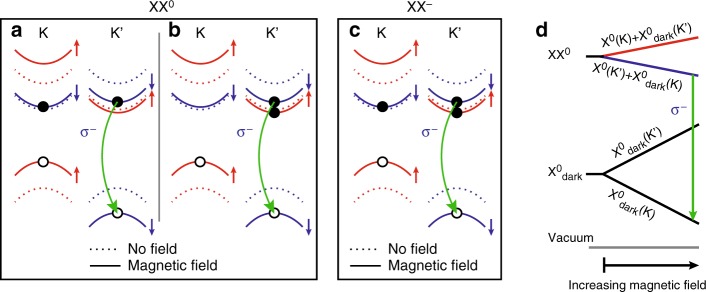Fig. 4.
Composition of biexciton species with applied magnetic field. a, b, c Single-particle picture of the internal structure of (a, b) XX0 and (c) XX− for B > 0. The eigenstates shift inequivalently in K and K′ (dashed curves indicate no magnetic field, solid curves indicate applied magnetic field, red and blue colours indicate opposite spin). XX0 comprises a bright exciton with highest radiative energy and a dark exciton with the electron (a) inter- or (b) intra-valley with the bright exciton. d Many-body picture of the magnetic field effect on XX0, comprising a bright and a dark exciton. Applying a magnetic field shifts the energy of the dark exciton more than that of XX0 due to the higher g of the former. This results in the dissociation of the biexciton in the form XX0 → X0dark + γ(σ−), where γ(σ−) is a photon with σ− helicity

